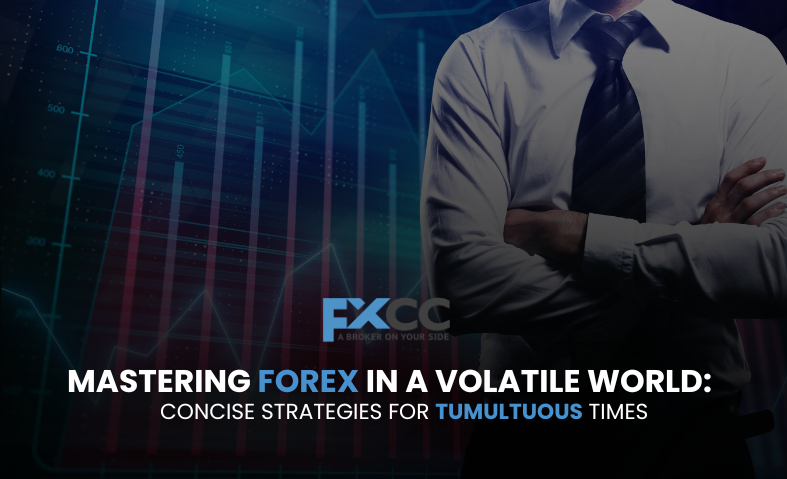The foreign exchange (forex) market is a vast, interconnected realm, constantly in motion. While dynamism is its inherent state, the modern global landscape amplifies this into significant volatility. Geopolitical shifts, rapid economic announcements, and policy adjustments can trigger sharp movements in currency pairs, presenting both considerable risk and substantial opportunity. For forex traders, navigating this heightened unpredictability demands not just strategies, but agile and resilient approaches.

Understanding the Drivers of Market Turbulence
To effectively trade in volatile conditions, it’s crucial to grasp what fuels these rapid price swings.
- Global Geopolitical Events: Political instability, such as unexpected election results, shifts in government policies, or widespread social unrest, injects considerable uncertainty, often weakening the affected nation’s currency. Natural disasters, by disrupting economic activity, also weigh heavily on currency values. Furthermore, international conflicts can significantly destabilize economies and ignite sharp currency fluctuations.
- Fundamental Economic Factors: Beyond overt events, core economic principles are constant drivers.
- Interest Rate Differentials: When a central bank raises rates, it typically makes that country’s currency more attractive to foreign investors seeking higher returns, leading to appreciation. Conversely, rate cuts can weaken a currency. In volatile periods, the rapid unwinding of ‘carry trades’ can amplify these swings.
- Economic Data Releases: Announcements like GDP figures, inflation rates, and employment statistics act as potent catalysts. Unexpected deviations from forecasts in these reports can trigger immediate, sharp movements as traders re-evaluate their positions and market sentiment shifts.
Essential Strategies for Volatile Forex Markets
Navigating a volatile forex market demands a disciplined and multi-faceted approach.
1. Robust Risk Management: Your Primary Defense
In volatile conditions, preserving capital is paramount. This begins with meticulous risk management.
- Calibrated Position Sizing: Reduce your trade size during periods of high volatility. This allows for wider stop-loss placements without risking an unacceptably large percentage of your trading capital, preventing premature exits from exaggerated intraday swings.
- Wider Stop-Loss Orders: Crucially, set wider stop-loss orders. Volatile markets exhibit larger price fluctuations, and tight stops are more likely to be triggered prematurely, leading to unnecessary losses.
- Favorable Reward-to-Risk Ratios: Always define a clear reward-to-risk ratio, ideally 1:2 or higher. This ensures that even if your win rate dips due to unpredictable movements, your profitable trades can still offset losses.
- Portfolio Diversification: Avoid concentrating all your capital in a single currency pair, especially those highly susceptible to specific geopolitical risks. Spread your exposure.
2. Prudent Application of Technical Analysis
Technical analysis remains valuable, but its application needs refinement in volatile markets.
- Validated Breakout Trading: Volatility can lead to powerful breakouts from established consolidation patterns. However, false breakouts are also more common. Wait for strong confirmation (e.g., significant volume, retest of the breakout level) before entering a trade.
- Post-Event Trend Following: While initial reactions to major events can be erratic, strong trends often emerge once immediate uncertainty subsides. Look for established trends that gain momentum after a significant event, but be prepared for sharper pullbacks.
- Dynamic Volatility Indicators: Utilize tools like Bollinger Bands and Average True Range (ATR) to gauge the current level of volatility. ATR can specifically help in setting appropriate stop-loss and take-profit levels that account for current market conditions.
3. Leveraging Fundamental Insights and News Flow
Staying profoundly informed is non-negotiable for success.
- Master the Economic Calendar: Religiously follow the economic calendar for key data releases and central bank announcements. Grasp how these events might influence particular currency pairs.
- Global News Awareness: Keep a close eye on major political developments, conflicts, or unexpected policy shifts. These can instantly override technical patterns. While direct “news trading” is risky, understanding the underlying fundamental drivers is crucial for long-term positioning.
- Understanding Safe-Haven Flows: During periods of heightened global uncertainty, currencies like the USD, JPY, and CHF tend to strengthen as investors seek safety. Recognize the broader market sentiment shifts driven by these capital movements.
4. Cultivating Psychological Fortitude
Trading in volatile markets can be emotionally taxing.
- Discipline and Patience: Avoid impulsive decisions driven by fear or greed. Stick firmly to your trading blueprint and resist the urge to over-trade. Volatility often tempts traders to chase every move, which frequently leads to significant losses.
- Emotional Detachment: Separate your emotions from your trading decisions. Acknowledge that losses are a natural part of trading, especially amidst market turbulence.
- The Trading Journal: Keep a meticulous trading journal to log your trades, noting your emotional state during each. This helps identify recurring psychological pitfalls and improve your decision-making.
5. Strategic Use of Technology
Technology offers a crucial advantage in navigating volatile markets.
- Optimized Algorithmic Trading: Algorithmic strategies can execute trades with speed and precision, minimizing emotional bias. However, algorithms must be extensively back tested and optimized specifically for volatile conditions, as strategies that work in calm markets may fail dramatically when volatility spikes.
- Advanced Charting Platforms: Utilize charting software with real-time data and advanced analytical tools to identify patterns and trends quickly and accurately.
- Volatility Calculators: Tools that predict currency movement over specific periods can assist in setting realistic profit targets and stop-loss levels that align with current market conditions.

Bottom Line
Forex trading in a volatile world is challenging, yet it presents considerable opportunities for the prepared. The foundation of success lies in a disciplined approach to risk management, a keen understanding of both technical and fundamental drivers, and unwavering emotional control. Adaptability, continuous learning, and the judicious use of technological tools will empower traders to not just survive but thrive amidst the market’s often-unpredictable currents. In an environment where uncertainty is a constant, a robust and flexible strategy is your most valuable asset.


